Ágora (1986-2024)
An artwork for deep space
Ágora is an unprecedented artwork that combines compact physical size, word-and-image poetry encoded holographically, propagating light, and large-scale temporality in a perpetual interplanetary orbit.Created: 1986
Launched: January 08, 2024
Launch time: 2:18 a.m. ET
Launch location: Space Launch Complex 41, Cape Canaveral, Florida
Watch the launch: here
Read the New York Times article about Ágora: Online and Print
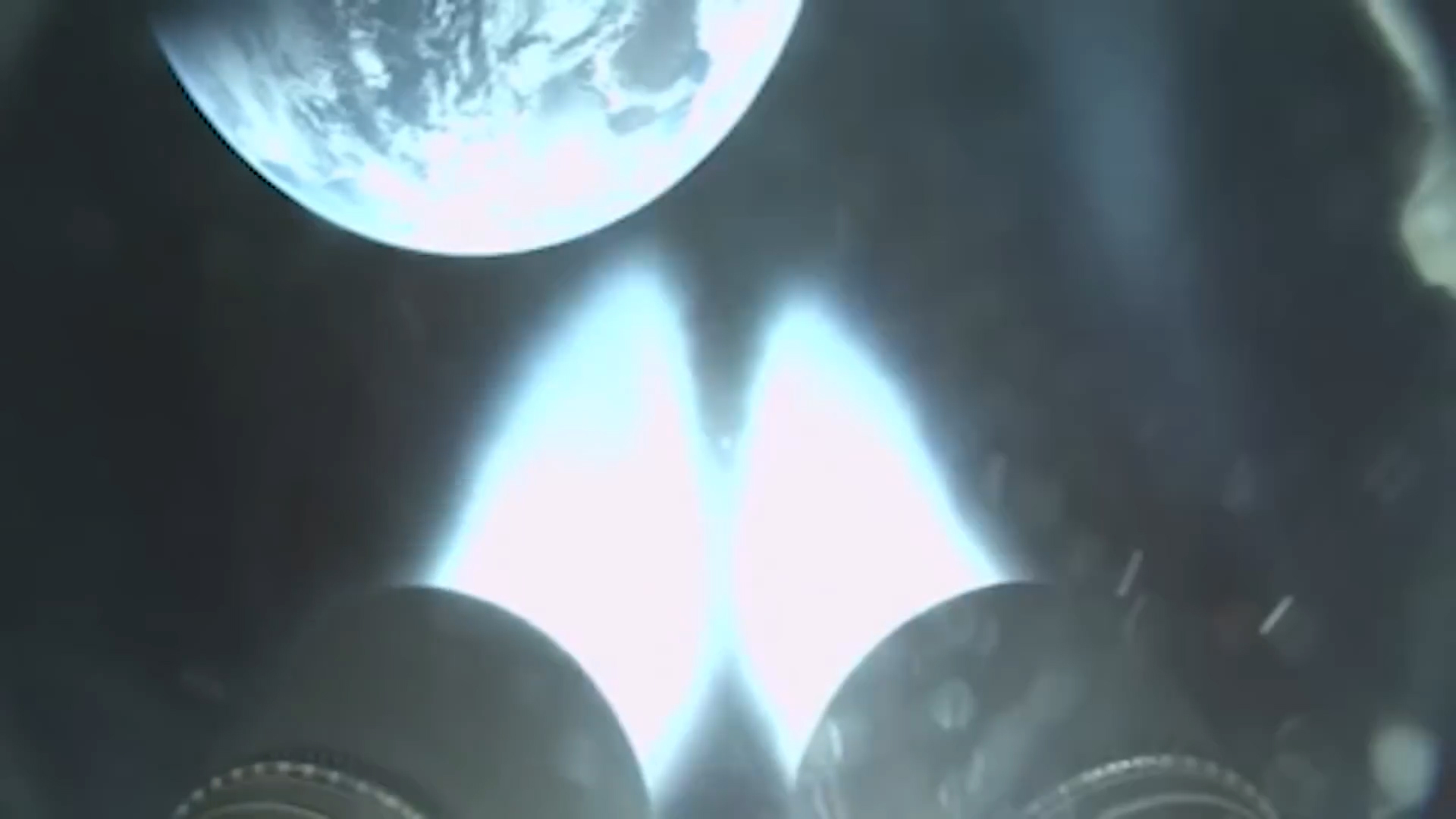
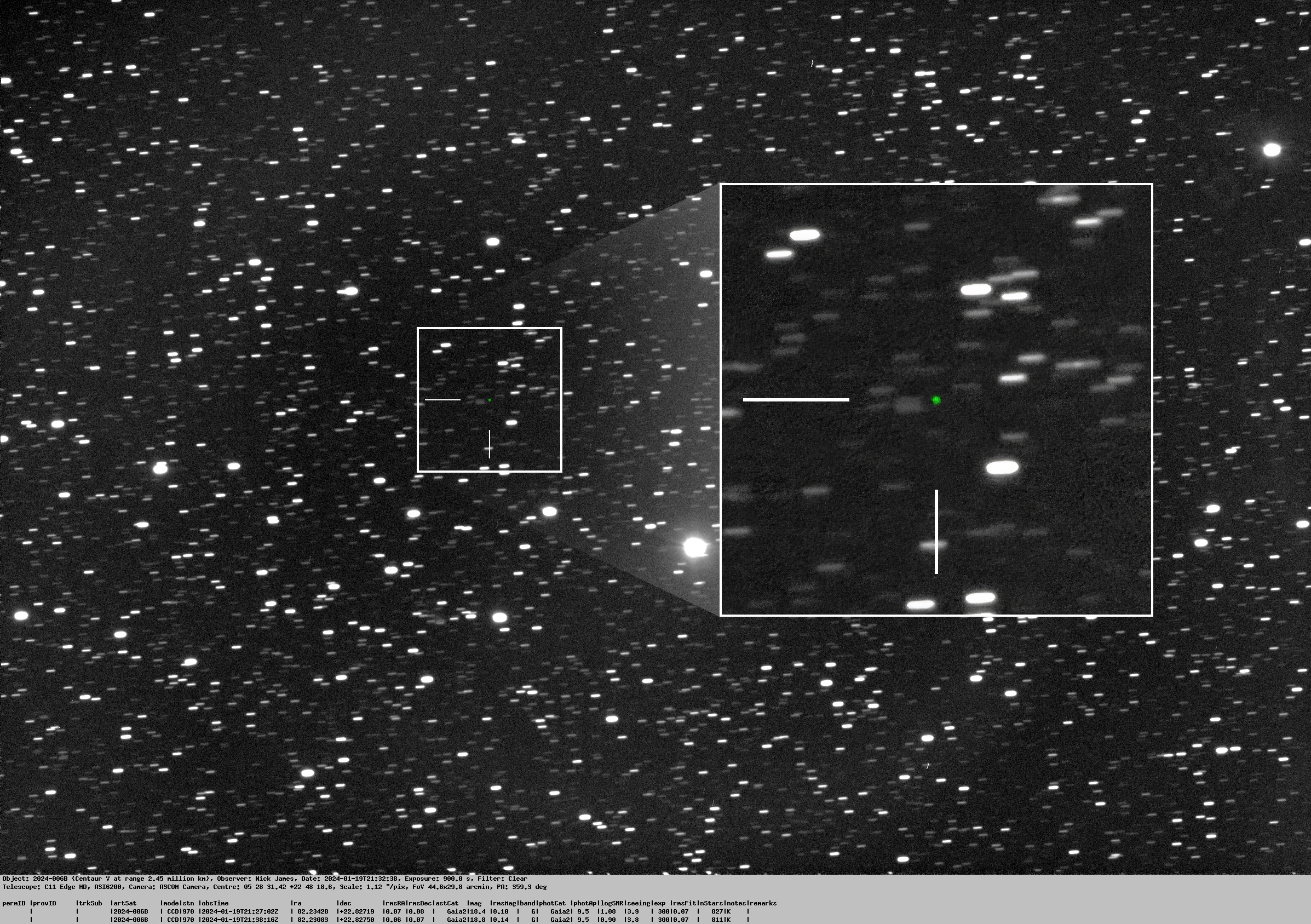
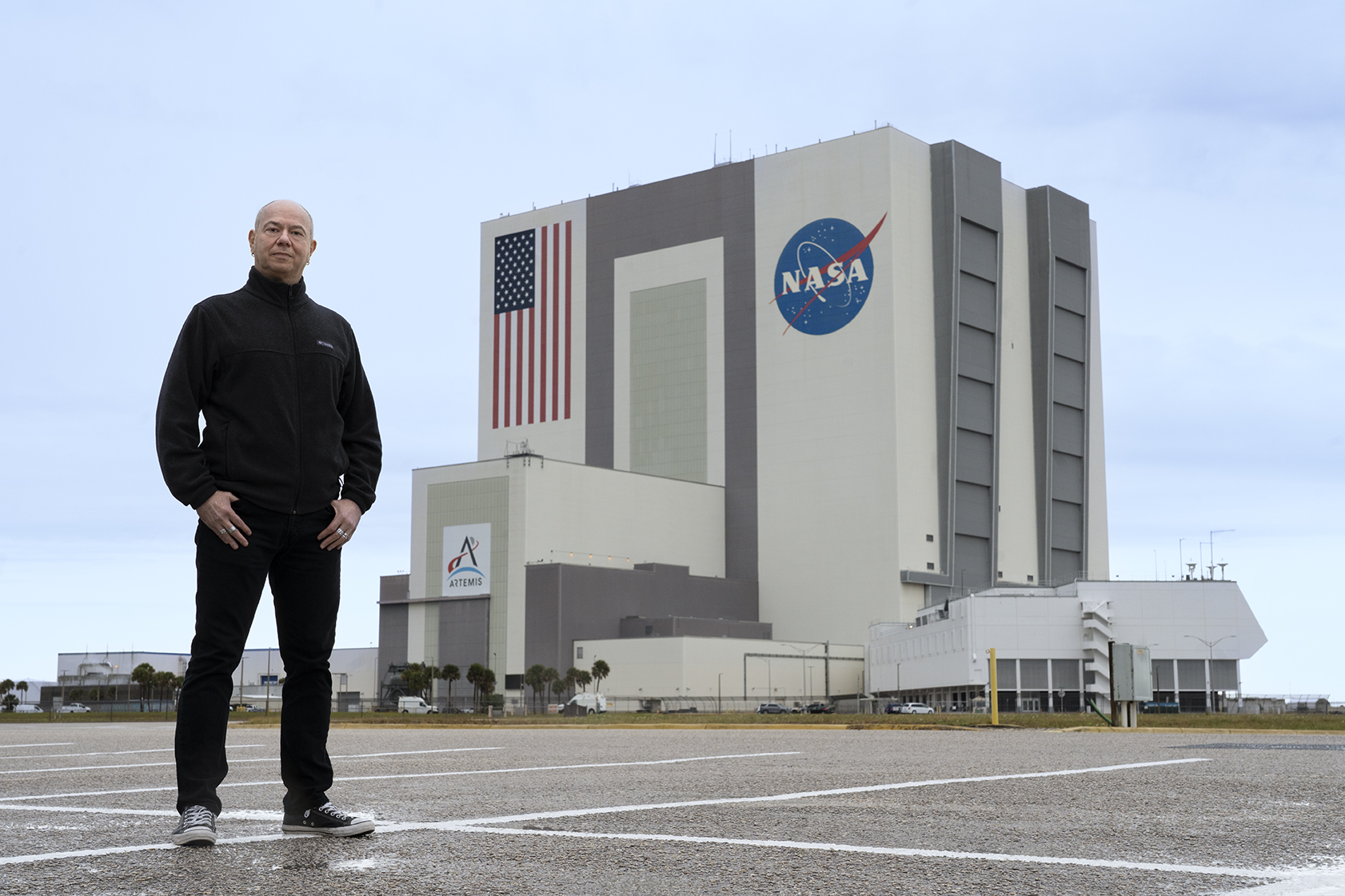
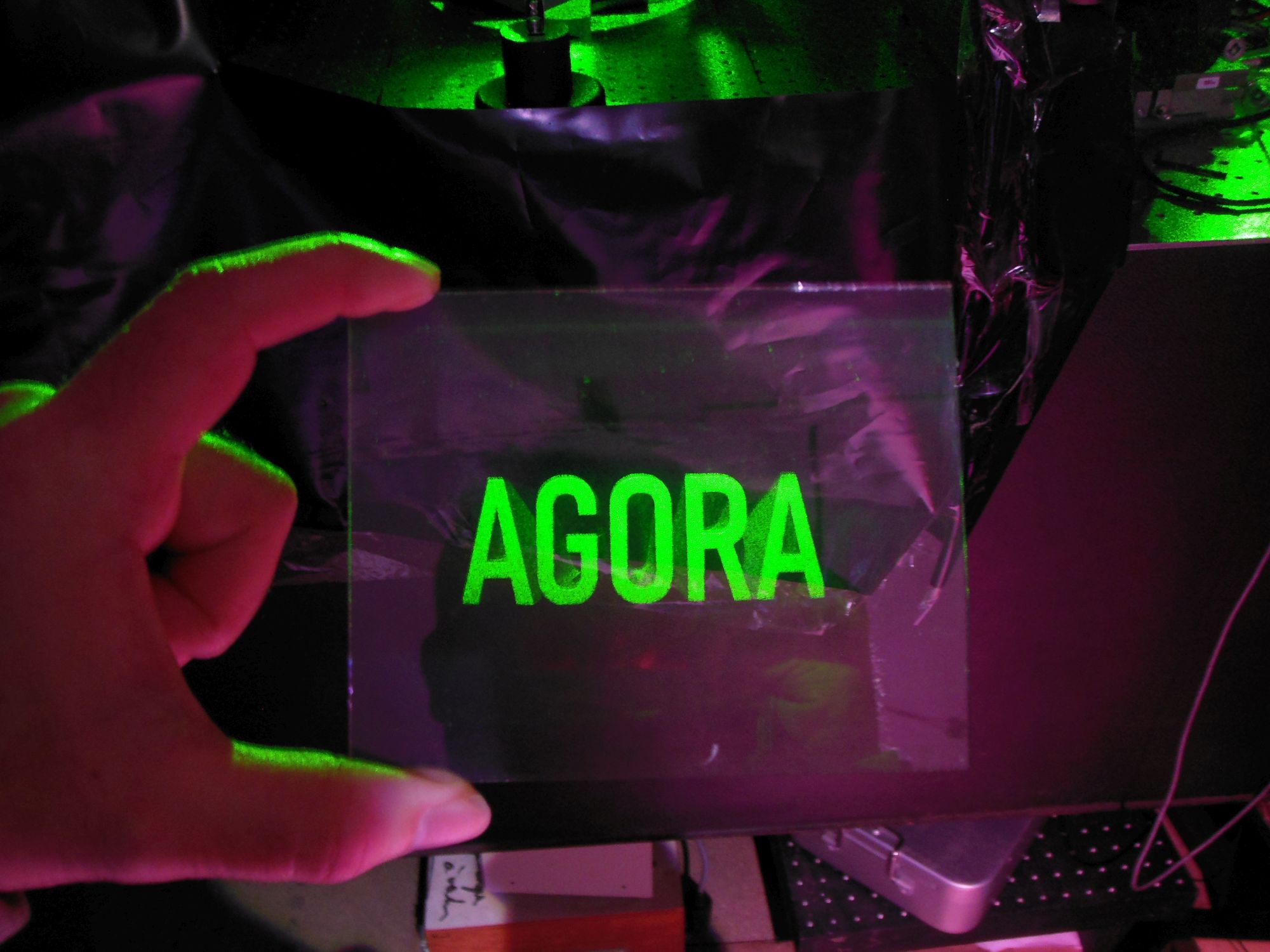

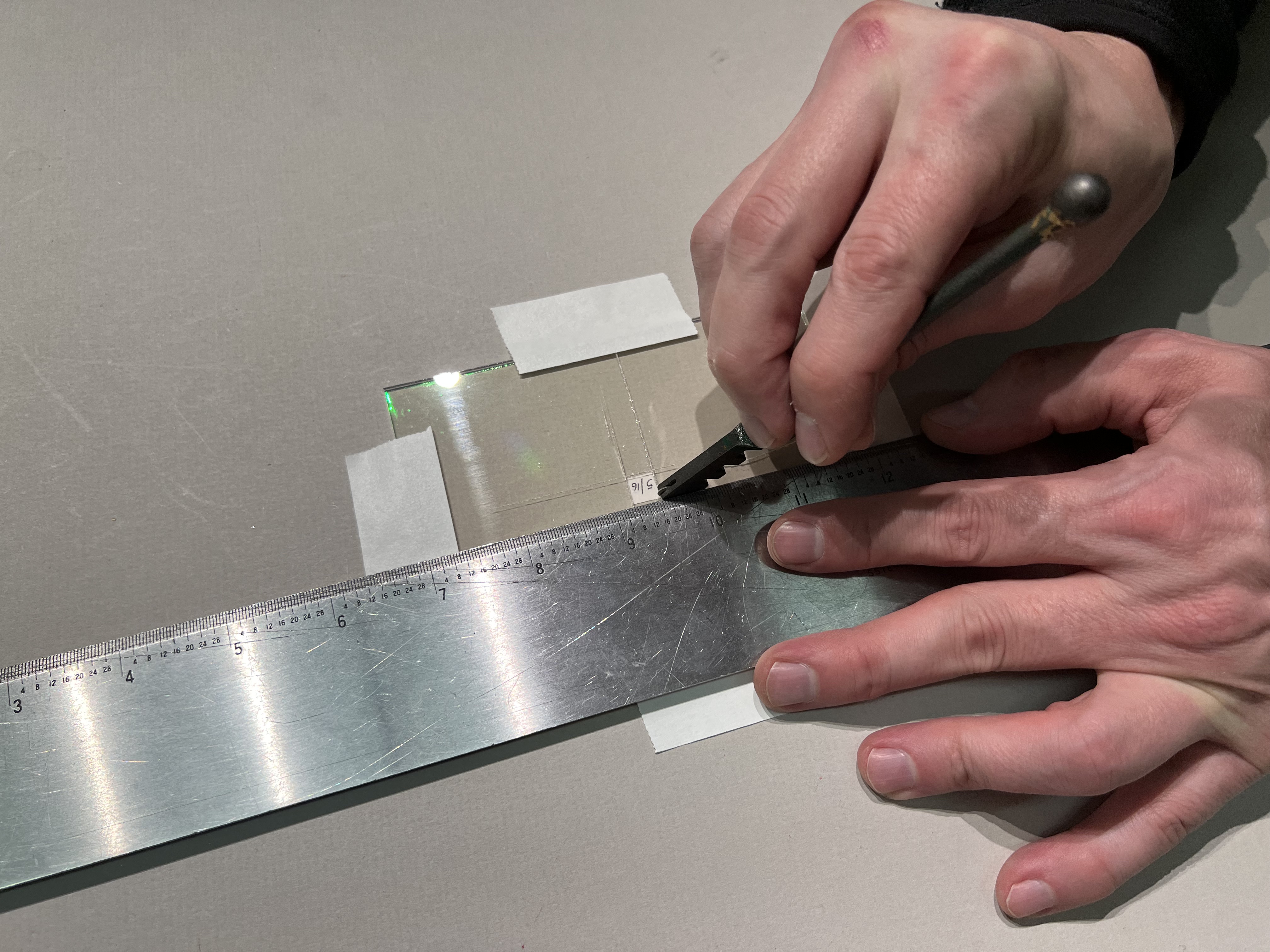
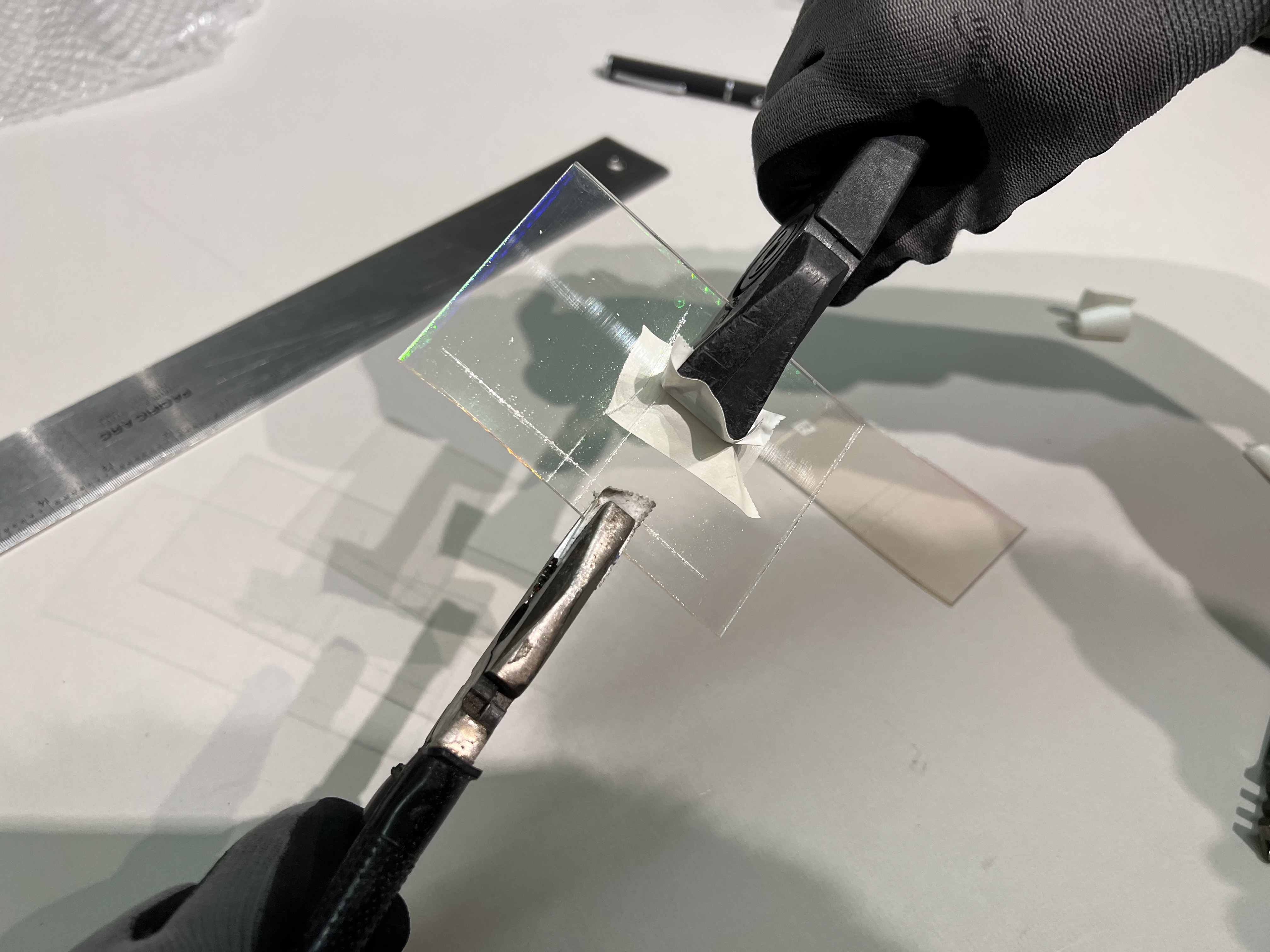

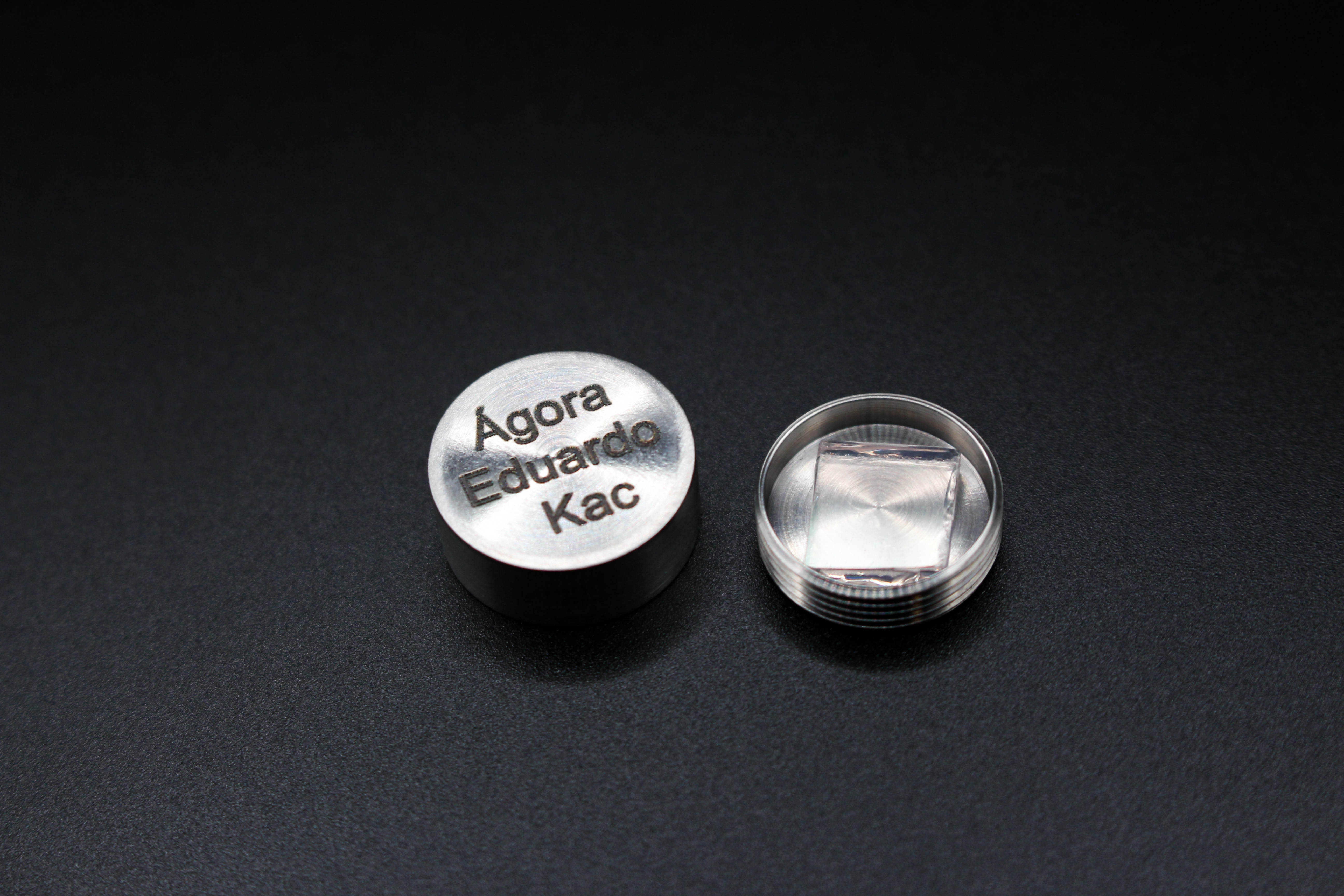
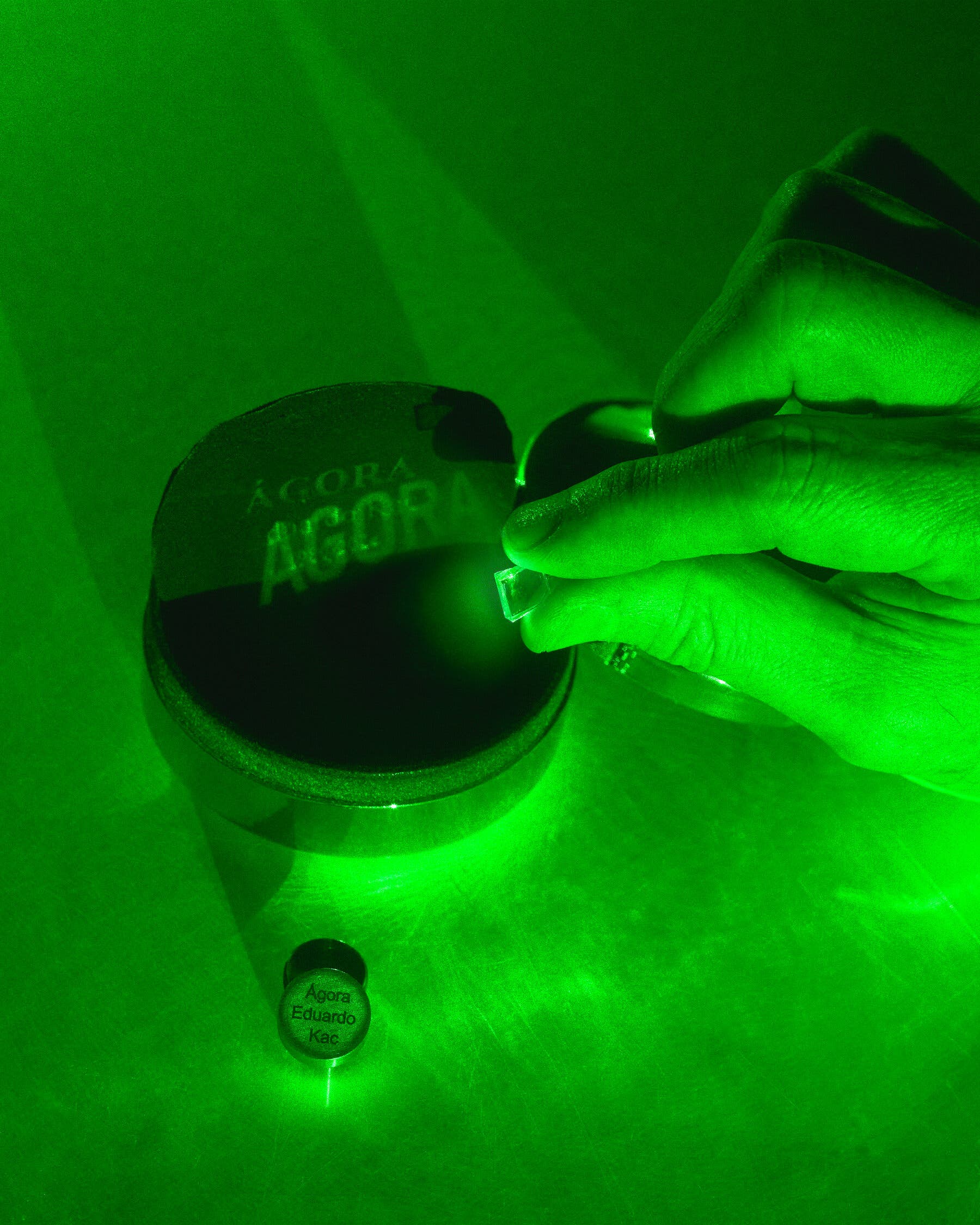
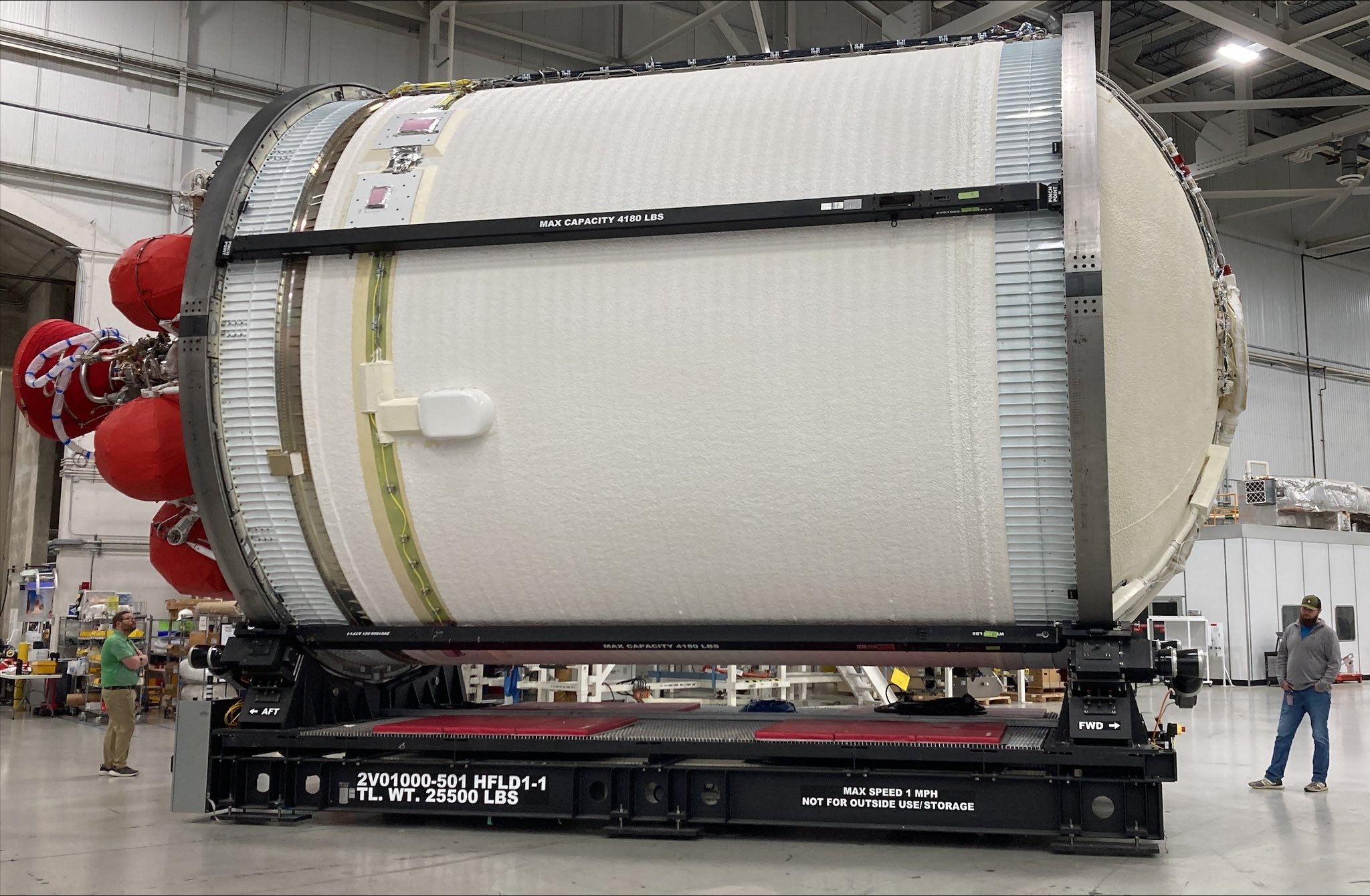
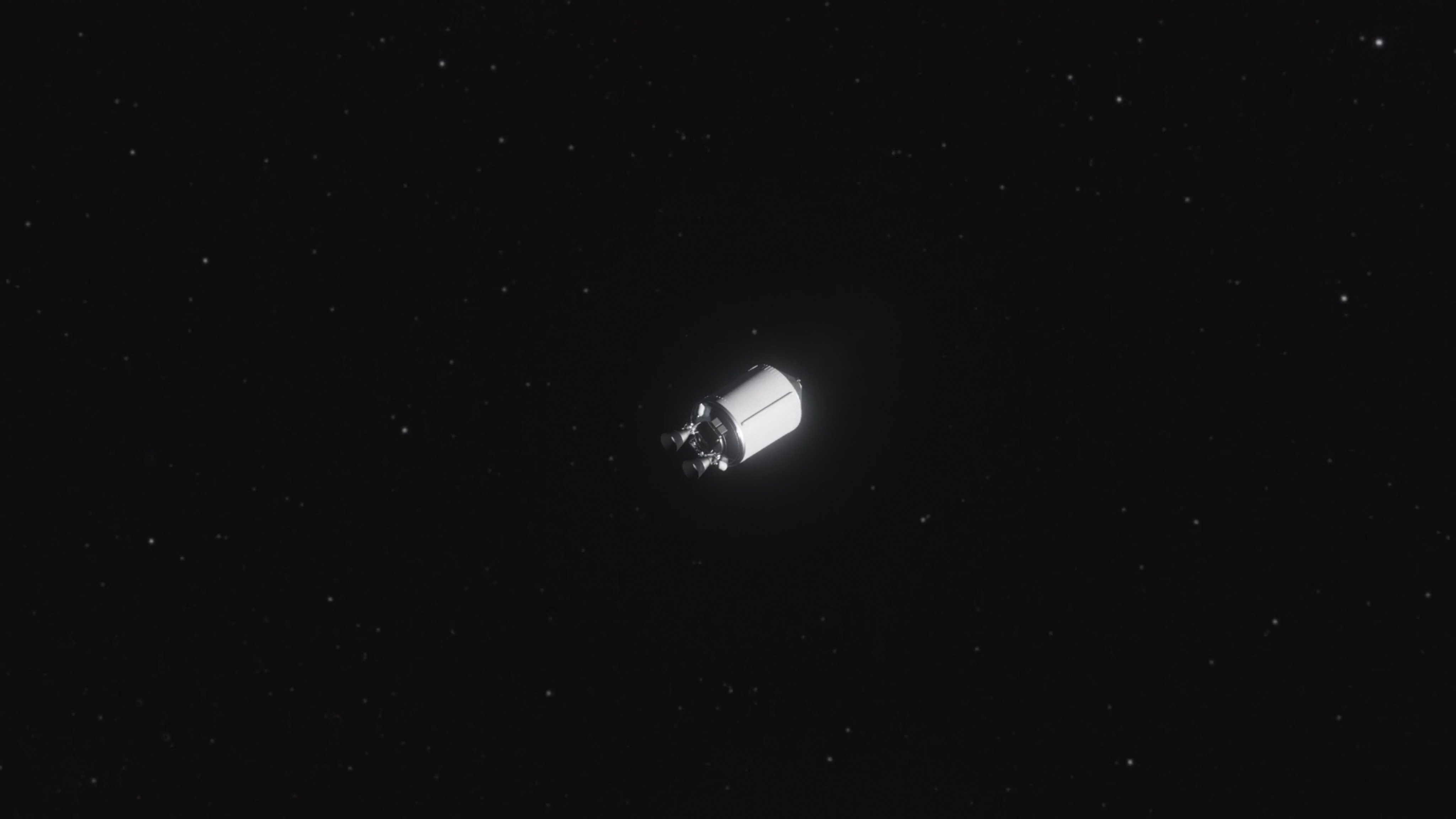
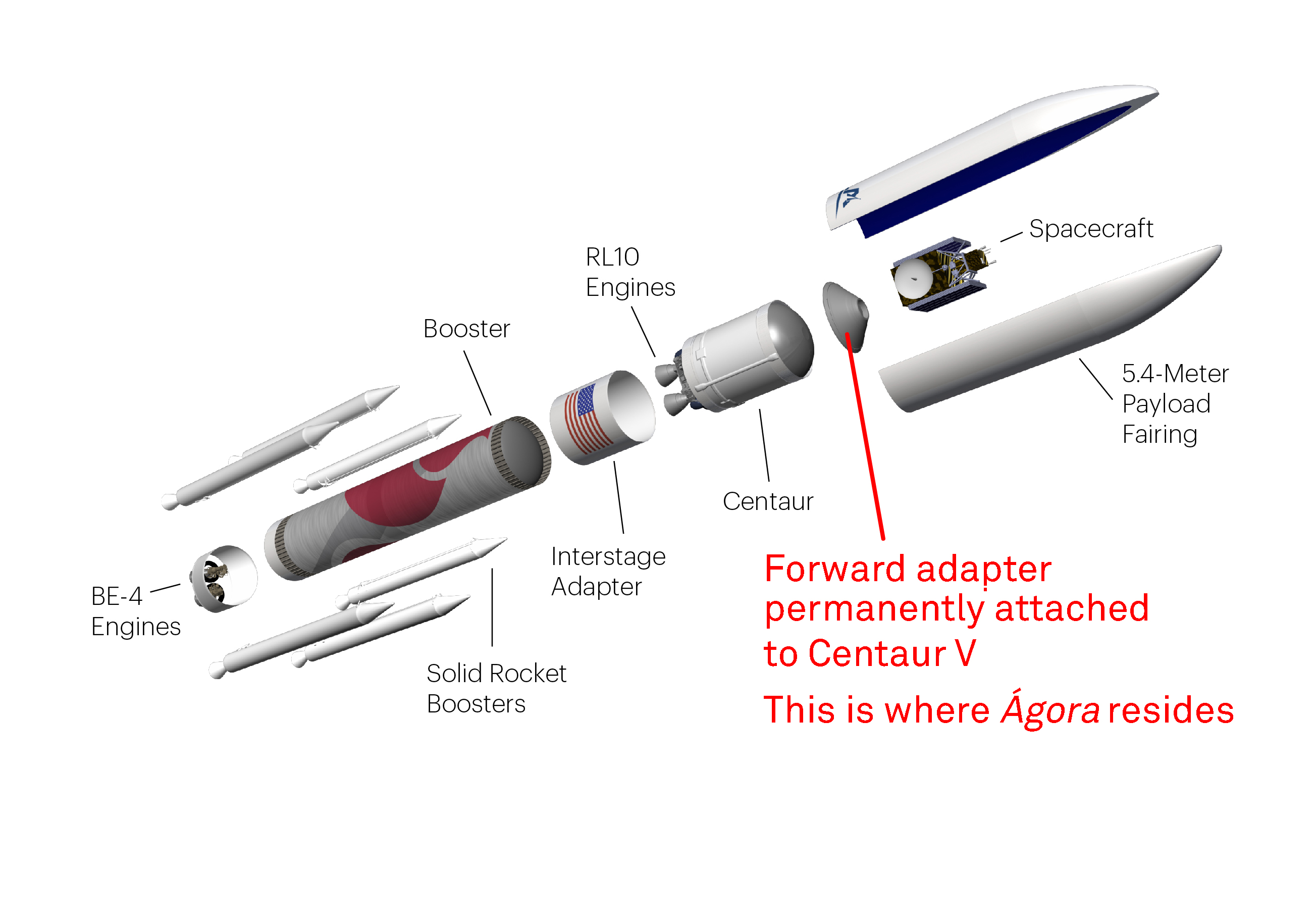
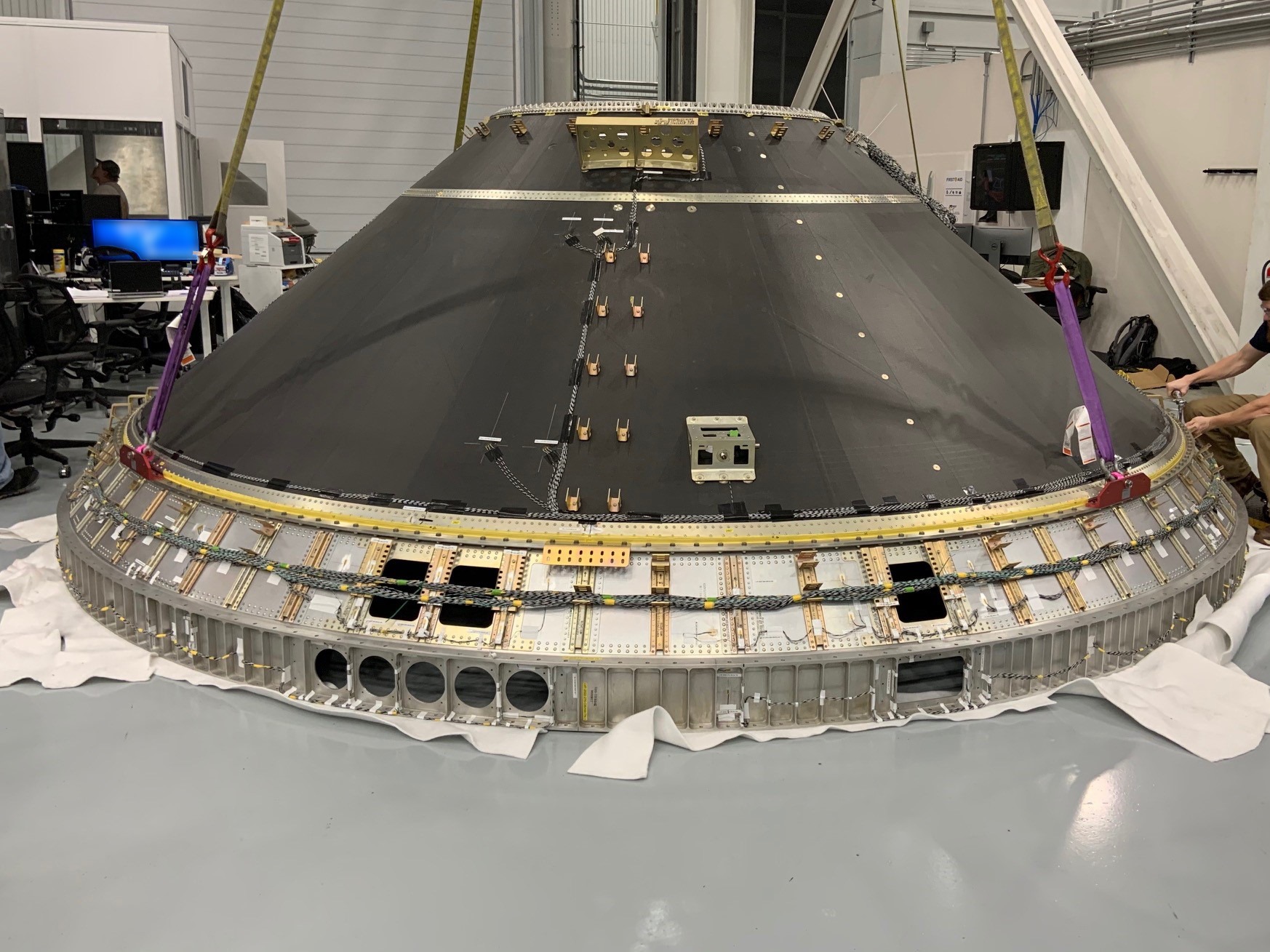

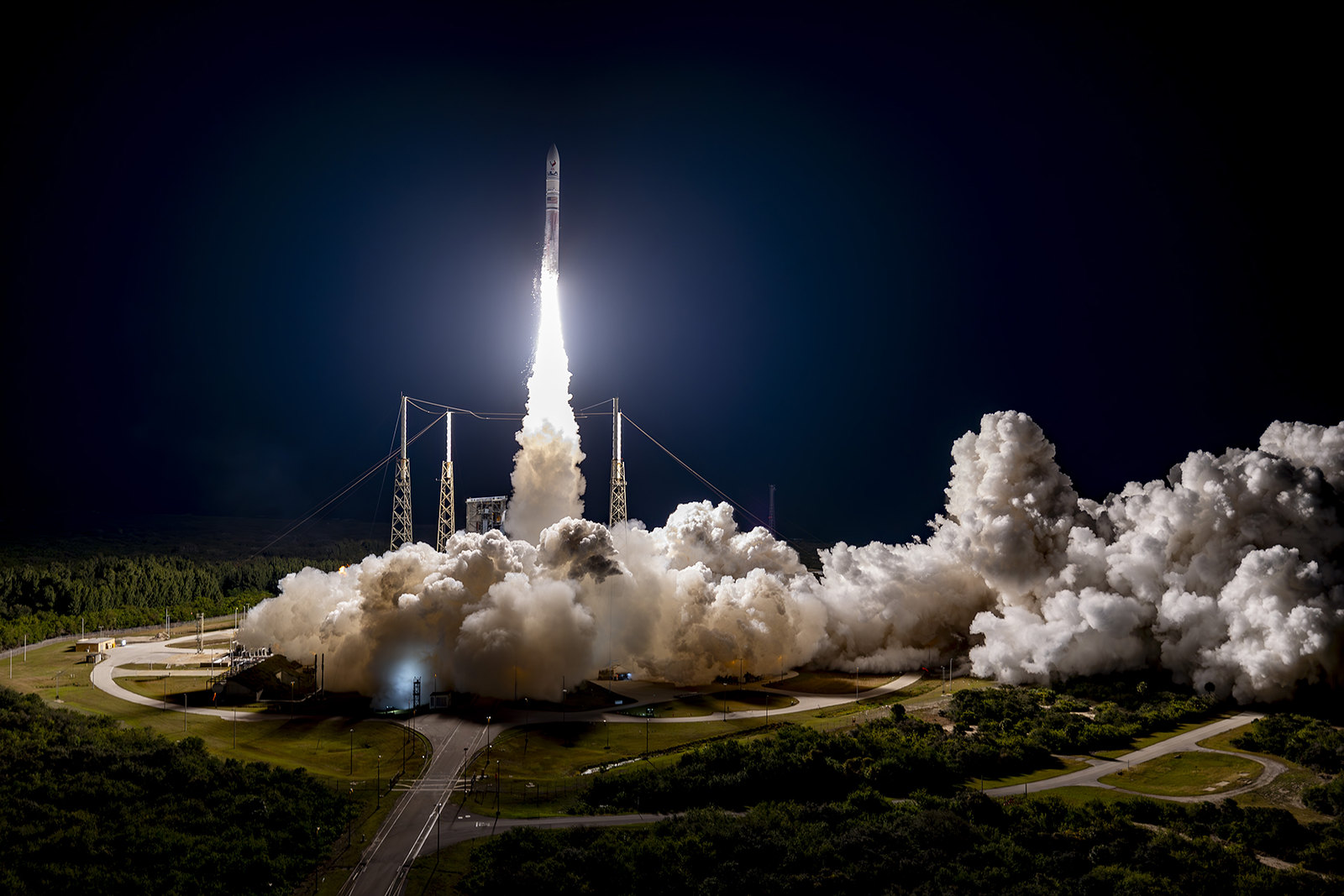
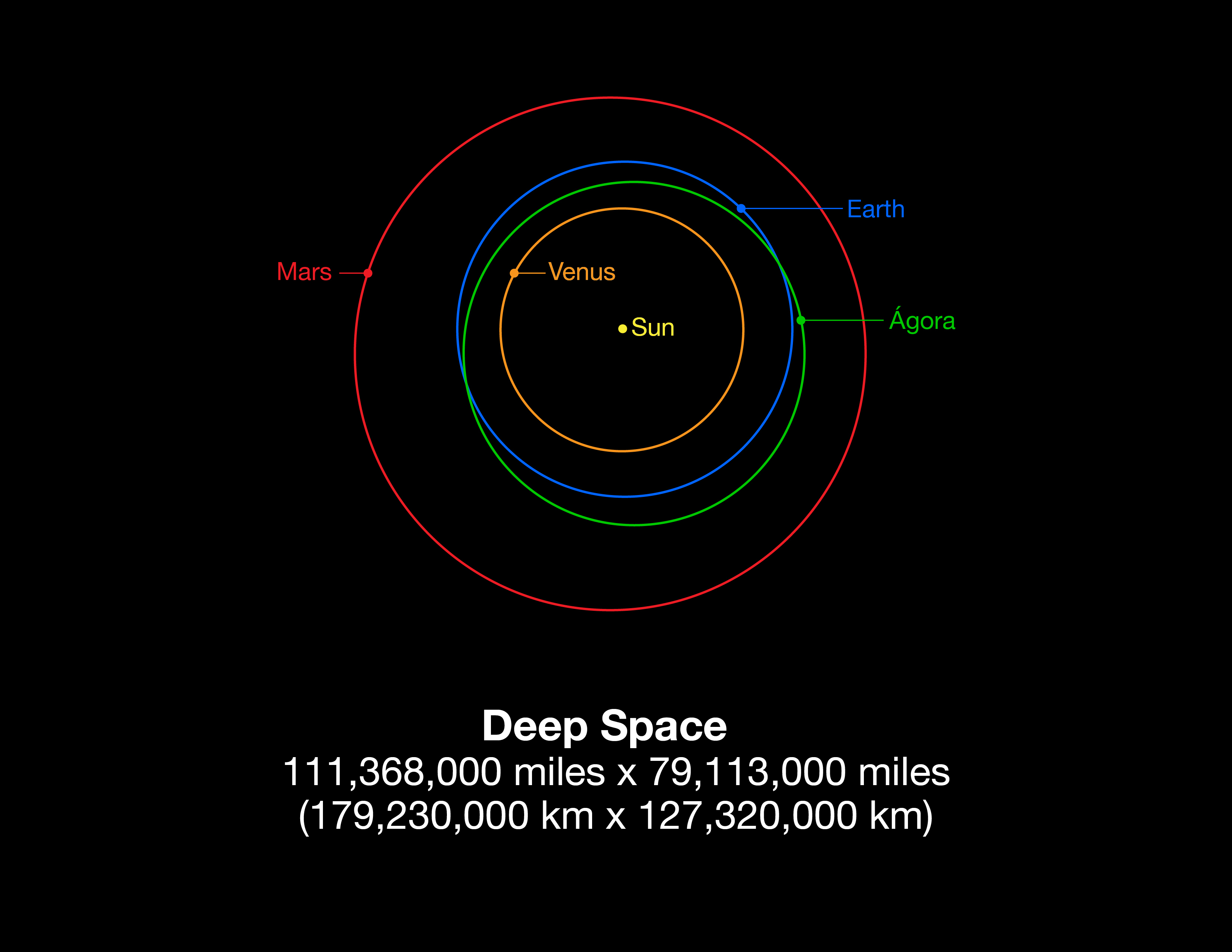
Safely stored aboard Centaur V, Eduardo Kac’s Ágora is in a heliocentric orbit, moving through interplanetary space in perpetuity. The following numbers represent the point in the orbit that is farthest away from the Sun (Aphelion) and the point in the orbit that is nearest to the Sun (Perihelion): 111,368,000 miles x 79,113,000 miles (179,230,000 km x 127,320,000 km).
Ágora: an artwork for deep space
Eduardo Kac
In 1986 I created my first space artwork, the holopoem Ágora [Agora] conceived for deep space. After thirty eight years following the dream of completing this work, with patience and perseverance, Ágora finally flew to deep space on January 8, 2024, as part of the inaugural flight of United Launch Alliance's Vulcan Centaur rocket.
In 1983, three years prior to creating Ágora, I had introduced a new art form that I named holographic poetry,or holopoetry, which consisted in the use of the unique properties of holography to create poems that floated in the air and changed their configurations according to the relative position of the observer. In 1985 I held the first solo exhibition of holopoems in São Paulo, which traveled the same year to Rio de Janeiro; other holopoetry solo shows followed. In 1995 I published a book collecting my theoretical writings about holopoetry.
One of the fundamental tenets of holopoetry is what I called antigravitropism, i.e., the use of language in a way that does not follow the perceivable effect of gravity on writing. In other words, the creation of works that, albeit produced on Earth, were not limited by the action of gravity on matter because the holopoems were composed of light.
This meant that, contrary to telluric objects, the letters and words in the holopoems were antigravitropic; they hovered freely outside, inside, or through the surface of the recording medium (i.e., holographic film or glass plate). Through the manipulation of this plasticity I created shape-shifting works; I produced a word-image continuum that, from the point of view of a moving observer, exists in a constant state of flux. I developed this art form until 1993, resulting in a body of work comprised of twenty-four pieces.
In 1986 I created Ágora when I was an artist-in-residence at the Museum of Holography, in New York. In the work itself (i.e, in the hologram), we see the Portuguese word AGORA (which means 'now', in English), all in uppercase, in order to create a weight equivalence between the letters. The difference between the two words, in Portuguese, is the acute accent, used to mark the vowel height. With this diacritical mark, the word makes reference to space; without, it makes reference to time. As a whole, the work alludes to the intertwined relationship between space and time.
As seen in the holopoem, the letters of AGORA are written three-dimensionally. They emerge and propagate from a single point, which means that visually and practically they behave as irradiating light. The work is a laser-transmission hologram, shot on 2mm glass with a custom-made high-resolution emulsion, using a YAG (Yttrium Aluminum Garnet) pulsed laser at the wavelength of 532nm (green). The hologram was first shot on a 4 x 5" (10 x 12.5 cm) plate and then trimmed to 5/16 x 5/16" (0.8x 0.8 cm). Since in a hologram the part contains the whole, the smaller hologram contains the entire visual and spatial information of the larger hologram. This also means that the small hologram contains the same optical volume of 91.3 in³ (1,458.3 cm³) seen in the large hologram.
My vision for this work is that, throughout its trajectory in space, it will function as a ‘potential star’: in the future, should it ever be found, whenever laser light strikes it at approximately 45 degrees, it will diffract the incoming light and output a wavefront that will be visible to the naked eye as the word AGORA. As it moves through the darkness of the cosmos, it will always encode the urgency of its message: ‘now’.
Ágora is a permanent work of space art. It may also be characterized as a work of ‘anticipatory space archeology’, my term to describe space artworks that are more likely to be discovered and seen in loco by future, rather than contemporary, audiences. At the same time, Ágora may be experienced on Earth in galleries and museums through an installation that shines a laser through the small glass square and projects the word-image encoded in the hologram as large as the available space. The contrast between the minute physical scale of the work and the expansive size of its projection dramatizes our awe before celestial time and the beauty of light amid the vastness of the universe.
Ágora is permanently housed inside a Titanium 5 capsule, secured in the forward adapter of the Centaur V upper stage. After launch, Centaur V was injected into an Earth-escape orbit to reach interplanetary space. Built specifically for the new Vulcan rocket, Centaur V has traveled beyond NASA’s James Webb Space Telescope, located at a distance of approximately one million miles (about 1.5 million kilometers) from the Earth. As a result, protected both by the titanium capsule and the Centaur V's forward adapter, Ágora orbits the sun in perpetuity, in a transplanetary elliptical orbit that goes between Mars and the Earth, and then between Venus and the Earth.
Vulcan Centaur lifted off on Monday, Jan. 8 at 2:18 AM EST, from Space Launch Complex 41, at the Cape Canaveral Space Force Station (CCSFS), Florida. Hosted by NASA, I attended the launch and watched it from the ITL causeway, located within the CCSFS, with a straight line of sight at a distance of 4.57 mi (7.35 km). It was magnificent to see Vulcan Centaur, in a roar of thunder, light up the night sky and transport Ágora into the cosmos.
Ágora gives us a glimpse of infinity, a feeling of connectedness with that which cannot be known or measured, with the grand impermanence and immensity of it all. It reveals the value of the fleeting and the significance of the imponderable, only to reaffirm the wonder of being here and now.
Ágora Firsts
- First artwork moving in perpetuity through deep space
- First artwork in orbit around the sun
- First transplanetary artwork
Vulcan Centaur Mission Details
- The launch of Vulcan Centaur Flight 1 took place from Space Launch Complex 41 at Cape Canaveral Space Force Station in Florida.
- Vulcan Centaur was launched on January 08, 2024, at 2:18 a.m. ET.
- The three primary goals of the Vulcan Centaur's Certification-1 launch were: 1) to demonstrate that the new rocket can execute a successful mission; 2) deliver a lunar lander to its intended flight path; 3) perform an Earth-escape burn to plot a trajectory to interplanetary space for Celestis, which includes Eduardo Kac's Ágora.
- Towards the end of the mission, spacecraft separation was followed by: 1) a third main engine burn to place Centaur in a hyperbolic orbit; 2) blowdown of the remaining propellants.
- Upon completion of its powered burn and coast phase, Centaur traveled beyond the Earth-Moon system, beyond the James Webb telescope, and into an endless journey in interplanetary deep space.
- This marked the first time in history a commercial payload was delivered to deep space.
- The Centaur V will reach its final orbit approximately 2 years after the launch, i.e., by early 2026.
- The Centaur V's orbital period is 337 days.
- By February 2037, the Centaur V will be close enough to Earth for even many current large amateur telescopes to see from the ground. The Centaur V rocket will still be much further than the Moon, and even further than the spacecrafts at Earth's lagrange points, like James Webb, SOHO, or the many future planned telescopes. It will return again in 2050, brighter and closer, but always further than the Webb telescope. The next return will be around 2063 or 2064, ad infinitum. Thanks to Sam Deen, who provided this information.
Acknowledgements: Eduardo Kac thanks Bill Gray, Sam Deen, and Jonathan McDowell for their help in confirming the Centaur V's orbit and period. The schematic orbital diagram shown above is based on ULA's original infographic and is provided here for clarity. For a scientific visualization of Centaur V's orbit, see Bill Gray's orbit determination from observations, in which the orbits of Earth and the Centaur are shown in cyan and green, respectively.
Image sources: Kac Studio, Celestis, and United Launch Alliance (ULA)
Read an United Press International-UPI dispatch about Ágora, July 28, 2023.
Read an article about Ágora published in ARTnews, July 28, 2023.
Read an EFE dispatch about Ágora in English, French, and Spanish, July 30, 2023.